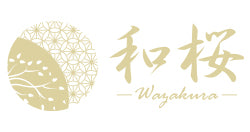The Essence of Craftsmanship in Bonsai Tools

Just as a bonsai artist carefully prunes and shapes their trees, Japanese artisans craft bonsai tools with precision and care.
The Heritage of Japanese Craftsmanship
Japan has a long tradition of craftsmanship, where knowledge is passed down from one generation to the next. In cities like Sanjo, known as the 'Town of Metal,' metalworking has been a way of life for centuries. Local blacksmiths, like Mr. Yuki from one of Sanjo’s oldest workshops, continue to uphold these traditions, crafting bonsai tools with the same dedication as their ancestors.
Artisans in Japan approach their work with a philosophy of constant self-improvement, always striving for better quality and precision. This mindset is particularly evident in the creation of bonsai tools, where every piece is made with attention to detail. From the forging of the steel to the final sharpening of the blades, the process is a testament to the skill and commitment of these craftspeople.

Key Traditional Tools and Their Uses
Bonsai Shears (Hasami)
Bonsai shears are the cornerstone of bonsai care. A sharp, precise cut is crucial for healthy bonsai growth, as it ensures clean wounds that heal quickly. Japanese blacksmiths meticulously balance and forge these shears, creating tools that are both beautiful and functional.
Concave Branch Cutters (Mataeda Hasami)
Concave branch cutters are specially designed to remove branches cleanly, allowing the tree to heal with minimal scarring. The curved shape of the blades requires expert craftsmanship, ensuring the tool promotes the tree’s smooth recovery after pruning.
Root Rakes and Tweezers
Root care is essential in maintaining a bonsai’s health. Root rakes help to carefully untangle roots during repotting, while tweezers allow for precision work in grooming and cleaning the tree. Even these smaller tools are crafted with the same care as larger ones, reflecting the artisan’s dedication to quality.
Wire Cutters
In bonsai, wire is used to shape and train branches. Cutting this wire without damaging the tree requires precision, which is why wire cutters are an indispensable tool. Japanese artisans use traditional materials like Yasugi Steel to ensure that their wire cutters are durable and sharp enough for the job.

The Process: How Traditional Bonsai Tools Are Made
The making of a bonsai tool is a detailed process that involves multiple steps and artisans. First, the blacksmith heats high-quality steel, such as Yasugi Steel, to around 1,000°C (1832°F) before hammering it into shape. The blades are then carefully sharpened, with some blacksmiths, like Mr. Yuki, even carving their own molds to ensure precision. Each tool undergoes between 50 and 60 different processes, with several artisans contributing to its creation, resulting in a unique, handcrafted tool.
Why Traditional Tools Matter
Using traditional bonsai tools is about more than just practicality—it’s about connecting with the centuries-old craft of Japanese artisanship. These tools are designed to last, offering durability and precision that mass-produced alternatives cannot match. They help preserve the integrity of the bonsai art, enhancing the overall experience for the bonsai artist.

Supporting Local Workshops and Artisans
By purchasing traditional bonsai tools, you’re not only investing in your bonsai practice but also supporting local Japanese artisans who keep these ancient traditions alive. When you use a tool handcrafted by a master blacksmith, you’re holding a piece of history and craftsmanship in your hands, ensuring that the legacy of Japanese tool-making continues.
Elevating Your Bonsai Practice
If you’re looking to deepen your connection to bonsai art, consider investing in traditional tools that embody Japanese craftsmanship. Tools like bonsai shears, concave branch cutters, and root rakes offer both quality and tradition, enhancing your bonsai care while supporting the artisans who make them. Explore our selection of handcrafted bonsai tools and bring a piece of Japanese artistry into your own practice!
Read more :
Japanese Pottery and Banko Ware
A Guide to Using the Kenzan in Floral Arrangements - By Ilse Beunen
